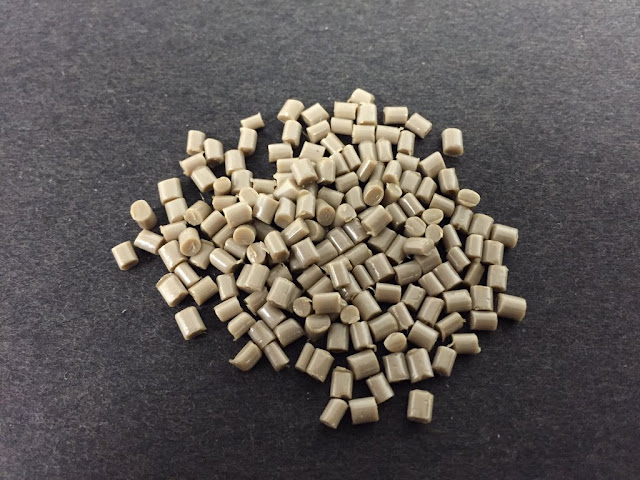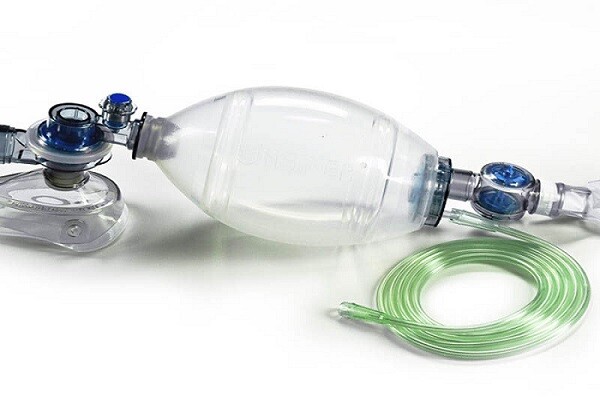Polyether Ether Ketone: A High-Performance Engineering Thermoplastic
 |
| Polyether Ether Ketone |
Polyether ether ketone, commonly known as PEEK, is a semi-crystalline
thermoplastic belonging to the polyaryletherketone (PAEK) family. PEEK polymer
was first developed in the late 1970s as an alternative to metal in
applications requiring high strength, rigidity and toughness at elevated
temperatures. It has excellent mechanical and chemical resistance properties which
make it suitable for use in demanding environments.
Physical Properties of PEEK
Polyether
Ether Ketone (PEEK) is known for
its high strength, stiffness and toughness even at elevated temperatures. Some
key physical properties of PEEK include:
- Density: 1.3 g/cm3, making it one of the lightest high performance polymers.
This property aids in weight reduction for parts.
- Melting Point: 343°C. PEEK retains its mechanical integrity up to 260°C and
can withstand short term peak temperatures up to 300°C.
- Glass Transition Temperature (Tg): Between 143°C to 150°C. Above this
temperature, the polymer transitions from a brittle glassy state to a rubbery
state with more impact resistance.
- Chemical Resistance: PEEK exhibits outstanding resistance to a wide range of
chemicals including organic solvents, acids, bases and salt solutions. It is
impervious to almost all chemicals except oxidizing acids.
- Excellent Dimensional Stability: PEEK has very low moisture absorption of
only 0.1-0.2% when immersed in water. This results in negligible swelling or
distortion on exposure to moisture/solvents.
Mechanical Properties of PEEK
The mechanical properties of PEEK make it a popular engineering material
replacing metals in many applications:
- Tensile Strength: Excellent tensile strength of 90-100 MPa with high retained
strength even at raised temperatures up to 150°C.
- Stiffness & Flexural Modulus: Comparable to Metals - Flexural modulus of
3.6 GPa provides strong but lightweight structures.
- Impact Strength: Outstanding toughness - un-notched Izod impact strength of
80-110 J/m. PEEK maintains impact resistance better than other thermoplastics
even at sub-zero temperatures.
- Fatigue & Compressive Strength: Superior fatigue strength and compressive
strength properties allow PEEK parts to withstand dynamic cyclic loading
conditions.
- Wear Resistance: Very low coefficient of friction of 0.25 and high abrasion
resistance. PEEK parts can be used in high wear applications.
Processing of PEEK
PEEK, being a semi-crystalline thermoplastic, can be processed like other
plastics using various manufacturing techniques:
- Injection Molding: Most common method used to manufacture complex parts in
high volumes due to PEEK's excellent flow characteristics. Cools rapidly for
net shape parts.
- Machining: Can be machined easily after injection molding using conventional
metalworking tools. Provides dimensional precision and intricate details.
- 3D Printing: Emerging as a useful technique for low volume production of
complex PEEK parts using laser sintering or powder bed fusion methods.
- Extrusion: Used to produce profiles, tubes, pipes and sheets which are further
thermoformed or welded to make finished products.
- Bonding and Joining: PEEK lends itself for adhesive bonding, welding,
screwing etc. It can also be bonded with fillers to reinforce weak areas.
Applications of PEEK
Due to its unique properties, PEEK has found diverse applications replacing
metals in industries such as:
- Aerospace: Engine components, fasteners, composites, structural frames
operating in high load/temperature environments.
- Automotive: Distributor caps, gear parts, ignition coils and valve seats for
their superior tribological properties.
- Medical: Implants, artificial joints, valves, tubes, dental brackets due to
biocompatibility and sterilization capability.
- Electronics: Insulators, semiconductor mounting brackets, wire and cable
insulation where heat and chemical resistance is critical.
- Industrial: Bearings, gears, pumps and valve components in ultra high
performance applications.
- Consumer Goods: Sports goods (tennis rackets, bicycle parts etc.), home
appliances, small industrial machines.
PEEK's excellent mechanical and chemical resistance properties along with
processability and superior performance at high temperatures, have led to its
wide acceptance as an advanced engineering thermoplastic replacing metals in
diverse industries. PEEK components deliver long-term reliability and cost
savings by reducing part counts and weight. Continued improvements in 3D
printing of PEEK will further expand its applications in the future.
Get
more insights on this topic: Polyether
Ether Ketone (PEEK)



Comments
Post a Comment